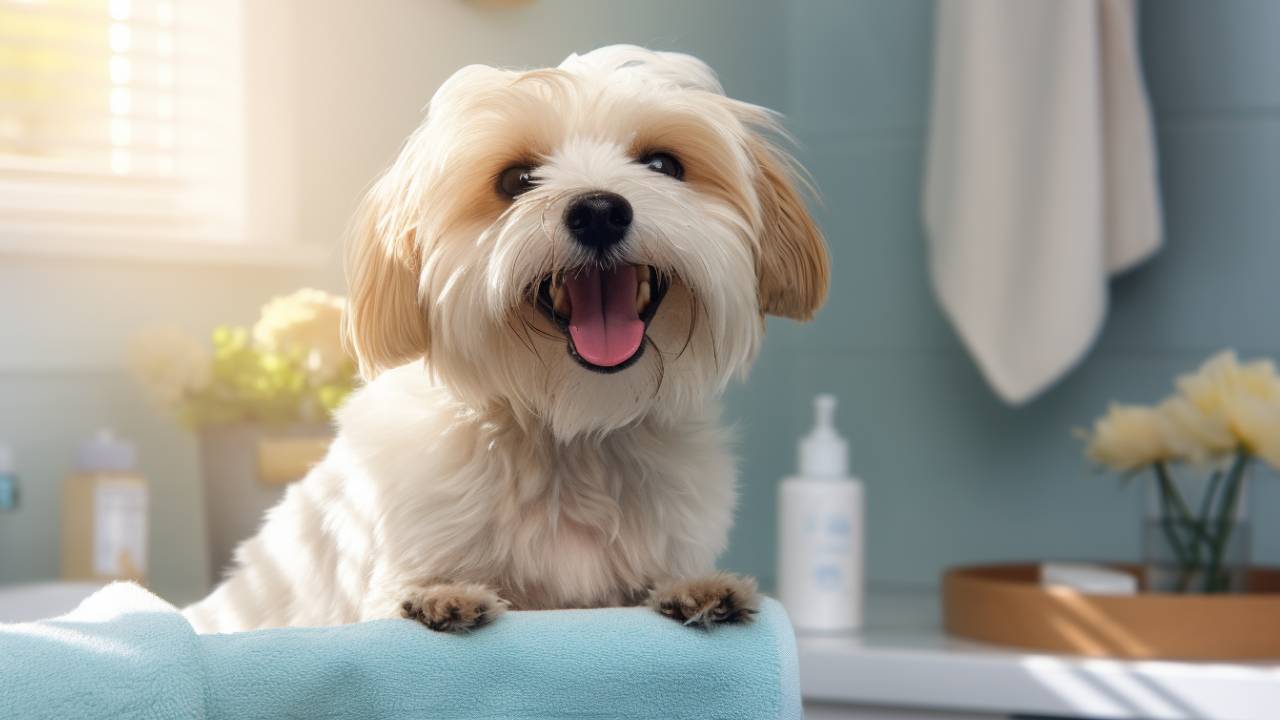Brushing your dog’s teeth at home is essential to responsible pet ownership. Fortunately, with the right approach, you can make this a manageable and enjoyable routine for you and your furry friend.
10 Steps to Brushing a Dog’s Teeth at Home
Explore the essential steps to ensure your furry friend’s dental health with our 10 Steps to Brushing a Dog’s Teeth at Home.
Neglecting your dog’s oral hygiene can lead to pain and discomfort and, in severe cases, impact their overall health.
Step 1: Gather Your Supplies
Before you begin, collect the necessary supplies. You’ll need a dog toothbrush, pet toothpaste (never use human toothpaste), a small bowl of clean water, and a treat afterward. Using a dog-specific toothbrush is crucial, as its bristles and shape are designed for a dog’s oral anatomy.
Step 2: Prepare Your Dog
Familiarize your dog with the toothbrush and toothpaste. Let them sniff and lick these items to reduce fear and anxiety. This step is essential for a smooth brushing experience.
Step 3: Choose the Right Time
Pick a quiet and comfortable spot for brushing. Avoid times when your dog is energetic or anxious. A calm environment will make the process easier for both of you.
Step 4: Get Your Dog Comfortable
Gently pet and talk to your dog to put them at ease. They need to feel relaxed and trust you throughout the process.
Step 5: Apply the Toothpaste
Squeeze a small amount of pet toothpaste onto the toothbrush. Dog toothpaste comes in flavors like chicken or peanut butter, making it more appealing to your pet. Hold the brush at a 45-degree angle to your dog’s teeth.
Step 6: Start Brushing
Begin by gently lifting your dog’s lip and brushing one or two teeth. Use soft, circular motions to clean the gum line and teeth. Focus on the outside surface, where plaque and tartar usually accumulate.
Step 7: Gradually Increase Brushing Time
At first, brush for just a few seconds, then gradually extend the time as your dog becomes more accustomed to the process. Aim for an entire two-minute brushing session.
Step 8: Be Patient
Dogs may resist or try to chew the toothbrush. Stay calm and patient. If your dog becomes anxious, stop and try again later.
Step 9: Rinse and Reward
After brushing, offer a small treat or a favorite toy as a reward. This helps your dog associate brushing with a positive experience. Rinse the toothbrush well and store it in a clean, dry place.
Step 10: Establish a Routine
Consistency is key. Brush your dog’s teeth at least two to three times weekly to maintain oral health. The more frequent, the better.
The Importance of Dog Teeth Cleaning
Regularly brushing your dog’s teeth is essential for preventing these dental problems. Here’s why it matters:
Preventing Plaque and Tartar Buildup
Brushing your dog’s teeth helps remove the plaque and tartar that can accumulate on their teeth. This simple practice goes a long way in maintaining healthy teeth and gums.
Fresher Breath
Bad breath, or halitosis, is often a sign of dental issues. By brushing your dog’s teeth, you can keep their breath fresh and enjoyable for those close interactions.
Pain Prevention
Dental problems can be painful for your dog. Regular dental care can spare them from the discomfort and suffering of gum disease, tooth decay, and infections.
Longer Lifespan
Proper dental care can help extend your dog’s lifespan.
Dental problems can lead to serious health issues, and by addressing them proactively, you can ensure a longer, healthier life for your furry companion.

Choosing the Right Pet Toothpaste
Choosing the right pet toothpaste is critical when brushing your dog’s teeth. It’s more complex than grabbing any toothpaste off the shelf. Here’s what you need to consider to ensure you’re making the best choice for your furry friend’s dental health:
- Pet-Specific Toothpaste
- Look for Enzymatic Toothpaste
- Consider Your Dog’s Preferences
- Avoid Harsh Ingredients
- Consult Your Veterinarian
Conclusion
Brushing your dog’s teeth is not just about aesthetics or luxury; it’s about promoting their health and happiness. By making dog teeth cleaning a part of your routine, you can ensure that your furry friend enjoys a healthy and pain-free life.
The benefits extend beyond oral health, influencing their overall well-being and lifespan. So, start today, and give your dog the gift of a bright smile and a healthier future.

FAQ
Can dog dental care prevent my pet from crying due to dental issues?
Dog dental care can prevent oral health problems that might lead to discomfort, but dogs don’t cry like humans. They may show signs of pain or discomfort through behavior changes or vocalization.
What are common signs that my dog is experiencing dental pain?
Common signs include bad breath, difficulty eating, pawing at the mouth, drooling, and behavioral changes. Monitoring your dog’s oral health to prevent these issues is crucial.
How often should I brush my dog’s teeth?
Brushing your dog’s teeth several times a week is ideal. Consistency is more important than frequency. Find a routine that works for you and your pet.
Can I use human toothpaste to brush my dog’s teeth?
Human toothpaste can be harmful to dogs if ingested. Use pet-specific toothpaste, which is safe and comes in dog-friendly flavors.
Is it normal for my dog to resist brushing its teeth?
Some dogs may be resistant at first. Gradual introduction and positive reinforcement can make the experience more pleasant for your dog.






my dog is already used to such procedures, so he sits calmly